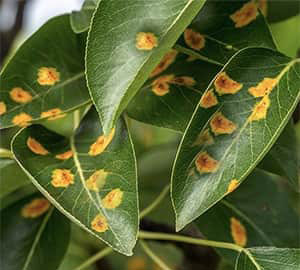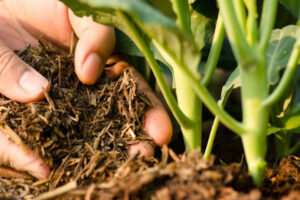Definition of pesticides
Definition of pesticides
The Food and Agriculture Organization (FAO) defines pesticides as:
Any substance or mixture of substances intended for water, its destruction or control, including human or animal disease, unwanted species of plants or animals, which causes injury during production, interferes with production, processing, storage . It is made, transported or marked. Foodstuffs, agricultural commodities, wood products and animal feed, or substances which may be used to control insects, ticks or other diseases in animals.
Types of agricultural pesticides according to the type of pest:
Poisons are grouped according to the types of pests they kill:
Insecticides – insects
Pesticides – plants
Rodents _ Rodents
Bacteria – bacteria
Fungicides – fungus
Laroids – Larvae
Types of fungicides for agriculture
Fungi can be one of the most important damages that agricultural products are exposed to. Fighting this disease has always been a concern of farmers. All kinds of fungicides are used for this purpose. Fungicides kill fungi and them or prevent their growth and spread. Fungicides work in different ways, but most of them damage the fungal cell or cause the fungal cells to produce energy. In agricultural crops, fungicides have a yield potential. Fungicides generally do not increase yield and do not restore yield if applied after the agent has developed. In general, fungicides are classified into two categories: natural fungicides (Agrosib Aral Chem natural fungicide solution) and anti-fungal toxins. Fungicide is one of the control methods that can be used in the integrated management program for fungal diseases. In this context, there is a need to prevent agricultural losses. In this article, a comprehensive review of the types of fungicides suitable for agriculture has been done. Also, a comprehensive article titled “Types of Pesticides” has been prepared by the Aral Chemical team, which you can refer to as a comprehensive guide to pesticide types.

Types of plant fungi
Nothing ruins plans for a thriving summer garden faster than a plant fungus. Plant fungi are a common problem for gardeners across the country, but the good news is that there are simple strategies that can be used to prevent them from being damaged by tomato blight, black spot, or clubroot. Below are some of the most common types of mushrooms:
Types of plant fungi and the use of natural fungicides for blight fungal infections on leaves
1. black spot
Black spot will be especially familiar to those who grow roses. This common fungal problem is recognized by its black, gray or brown spots that appear on the leaves of the plant and cause them to fall.
2. fluffy white
Downy mildew attacks the leaves and other parts of the plant that grow above ground. This type of mold grows in cool, damp and humid conditions and mostly occurs in young and unhealthy plants or any plant under stress. Downy mildew has several different strains and can cause different reactions in different plants. For some, it causes yellowing of leaves and stems, while in other plants, it inhibits flowering. The best way to treat downy mildew is to remove infected plants as soon as symptoms appear, as fungicides do not work well for this type of plant disease.
3. powdery mildew
In contrast, powdery mildew thrives in dry soil conditions, in humid and humid climates. They can infect roses and clematis. It usually grows on the upper surface of the leaves of the plant, it can also spread to the lower part of the leaf or stem. If infected, the plant may turn yellow or eventually brown and the leaves die. The best way to manage it is to remove and destroy the infected parts of the plant and maintain the soil with irrigation and mulch.
4. Blight (fire or wind)
Blight is a serious disease that infects tomatoes and potatoes. Tomato diseases and potato pests and diseases can destroy the crop or make it inedible. Blight is recognized by brown, discolored leaves starting at the edges. The leaves tend to dry up and curl inward, and in wet conditions, it may be associated with the growth of white fungus. Both tomatoes and potatoes can develop brown spots that turn into rotting sores.
5. rust
Rust is one of the easiest diseases to identify because it looks like rust on plants. Once it emerges, it is very difficult to control, but each type of rust is specific to one plant, so it does not spread through the garden. If there is rust in a garden, the infected parts should be removed and destroyed. Fertilizers containing high nitrogen should be minimized. Instead, high-potassium fertilizers help strengthen the leaves. During the season, you can use a fungicide solution to prevent rust from forming or returning. ⇐ What is vinegar fertilizer article?
6. wilting
Wilt affects a wide range of plants and vegetables, including chrysanthemums, peppers, tomatoes, potatoes and fruits. In this type of fungal disease, wilted leaves can turn yellow or brown. Wilting can be prevented by avoiding high nitrogen fertilizers and using liquid plant fertilizer to help promote healthy and strong plants.
7. Club Root
Club rot is a fungal infection that usually occurs in the roots of brassicas such as cabbage, cauliflower, Brussels sprouts, and turnips. It can also affect the ornamental family such as wallflowers and saxifrage. When infected, the roots become swollen and distorted, and the growth of the above-ground part stops, showing purple and wilted foliage. This disease often occurs when the soil is moist and warm (mid-summer to late fall). It can be treated by increasing soil pH, liming and improving drainage. You can also prevent its formation by using liquid plant fertilizer during the growing season.
8. anthracnose
Anthracnose is a common plant disease that affects many species. It is mostly found in tomatoes, cucumbers, beans and fruits such as melons. They are recognized by the small, sunken spots that appear on the fruits and pods and have pink sores in the center. If anthracnose is found, it can be controlled by removing any infected leaves and ensuring plant health is maintained by replacing the soil with enriched compost.
9. Plant virus (mosaic)
There are a number of viral plant diseases that can affect plants and vegetables, but most are specific to a single plant or group of plants. They can be transmitted by sap-sucking insects, through seeds or by contaminated tools. Cucumbers and potatoes are more susceptible to a plant virus called mosaic, which can be identified by a mosaic pattern on the leaves, where there is a spot or yellowing. One of the easiest ways to prevent it from appearing in the garden is to sterilize any tools and use insecticides to prevent sap-sucking insects. If it appears in plants, the soil should be removed to prevent the spread of the disease. Liquid fertilizer can also help plants grow strong and healthy, thus making them less susceptible to disease.


 English
English  فارسی
فارسی 